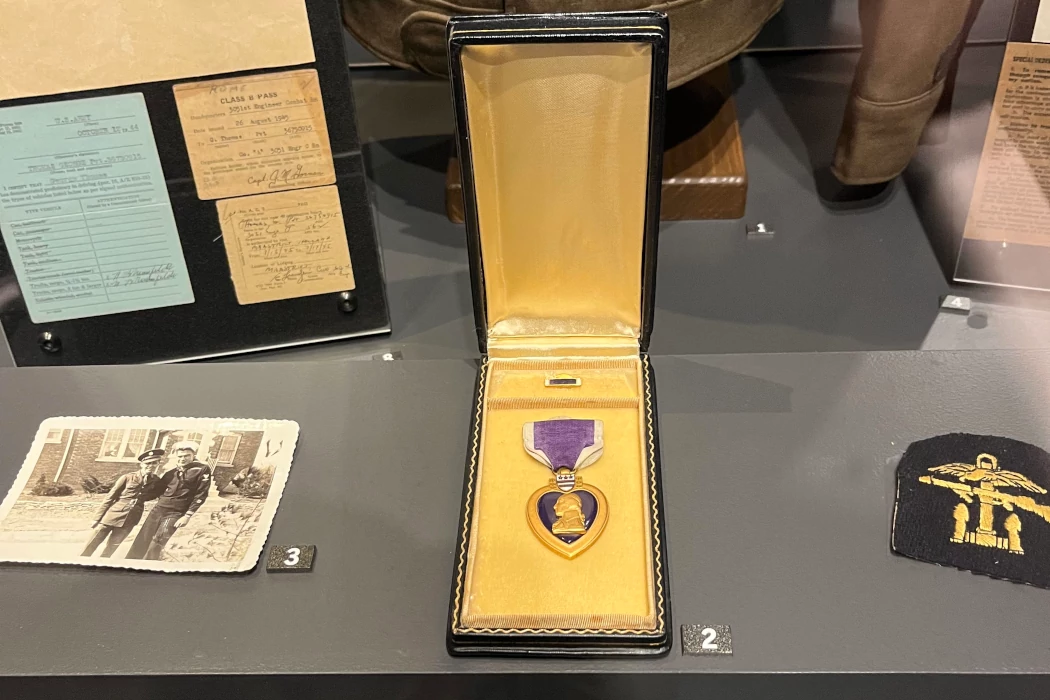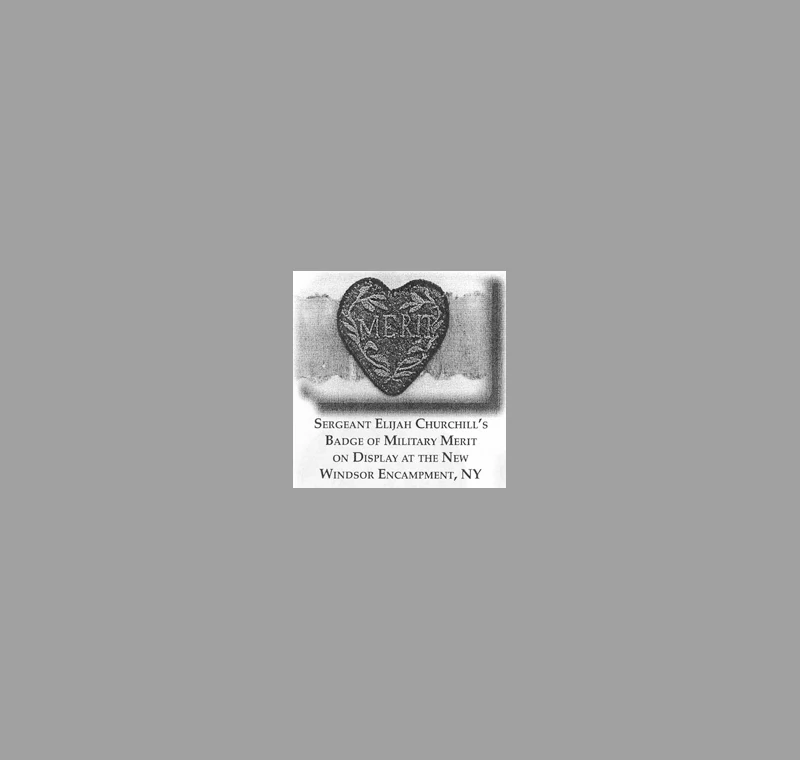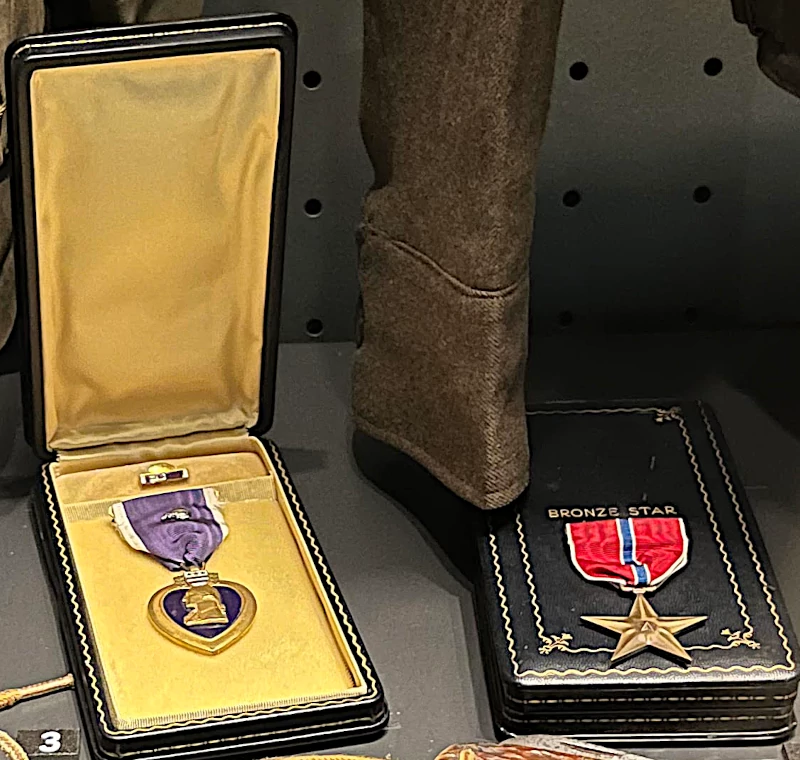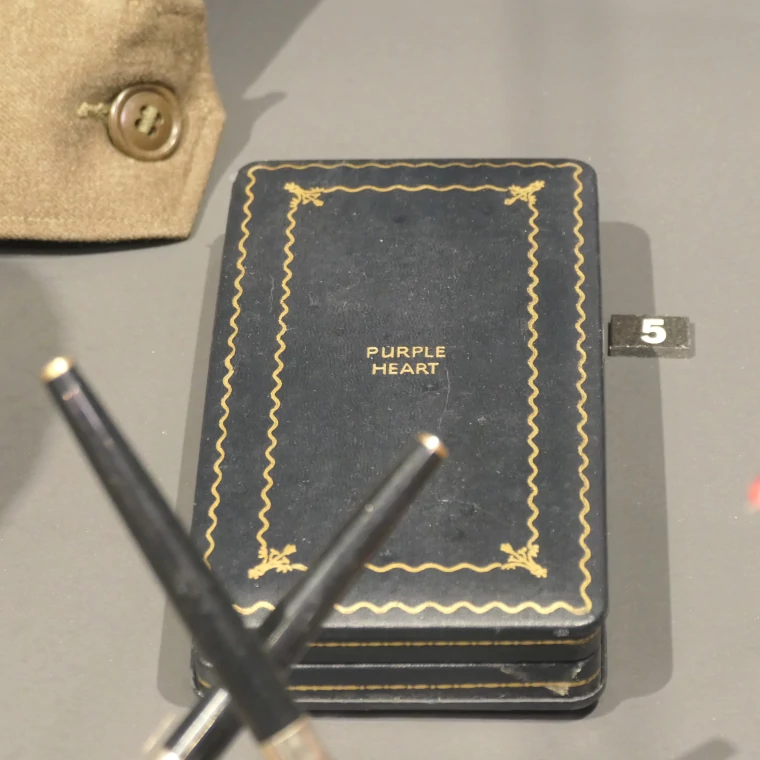

Aug. 7 is honored nationally as Purple Heart Day. The National Museum of Military Vehicles is honored to display three World War II Purple Hearts in our General George C. Marshall World War II Gallery.
By Douglas R. Cubbison, Curator, National Museum of Military Vehicles
Aug. 7 is National Purple Heart Day
Between their formation in 1775 and 1861, the U.S Army, Navy and Marine Corps had no valorous medals. The sole exception was the Badge of Military Merit, the original "Purple Heart", established by General George Washington on August 7, 1782. Only three Badges of Military Merit are known to have been awarded during the American War of Independence. Those who received the Badge of Military Merit include Elijah Churchill, William Brown and Daniel Bissell, Jr.Â
The National Purple Heart Hall of Honor in New Windsor, New York has the original Purple Heart of Elijah Churchill on exhibit. We annually honor August 7th as Purple Heart Day and remember the history of the medal.

Although General George Washington intended that the Badge of Military Merit be made permanent, it was allowed to lapse after the Continental Army was disbanded in June 1783.ÂThere were proposals made regarding the establishment of a medal of valor for the U.S. Army, but General Winfield Scott, Senior Officer of the U.S. Army, resisted any such efforts, stating that such awards "smacked of European tradition."
Beginning in 1861, the Medal of Honor for valor was authorized by the U.S Army and Navy. On February 22, 1932, General Douglas MacArthur (then Chief of Staff of the U.S. Army) issued War Department General Order No. 3 establishing Washington's Purple Heart as a Medal of Merit, and for wounded or killed soldiers... simultaneously, he awarded himself the first Purple Heart!

Since then, over the years, the Purple Heart has grown. In 1942, President Franklin Delano Roosevelt expanded the Purple Heart to the U.S. Navy, Marine Corps and Coast Guard. President John Fitzgerald Kennedy, in 1962, expanded the Purple Heart to include civilians who were serving with the Armed Forces and were wounded or killed in combat actions. In 1966 Prisoners of War were added. And in 1984, President Ronald Reagan again expanded the Purple Heart to include terrorist and peacekeeping operations. As recently as March 2021, new guidelines were issued by the U.S Army which allowed Purple Hearts to be awarded for Traumatic Brain Injuries (TBI).

ÂCurrently, the Purple Heart is authorized for any member of the U.S. Armed Forces who has been wounded or died from wounds sustained under certain conditions, as defined by the Department of Defense, Manual of Military Decorations and Awards: DoD-wide Performance and Valor Decorations (Manual 1348.33, Volume 3, Change effective June 20, 2019).
The best estimates are that 1.8 million Purple Hearts have been awarded since 1932. During World War II, approximately 1.5 million Purple Hearts were manufactured. In anticipation of the invasion of Japan, the War Department allowed that 500,000 Purple Hearts be held in reserve... these 1945 Purple Hearts are still the ones being awarded, although their supplies are now running low.
The National Museum of Military Vehicles is honored to display three World War II Purple Hearts in our General George C. Marshall World War II Gallery:
* Private First Class George Thomas in Amphibious;
* Sergeant James Florentine in Airborne Operations; and
* Sergeant Kenneth Millar in Tank Destroyers.